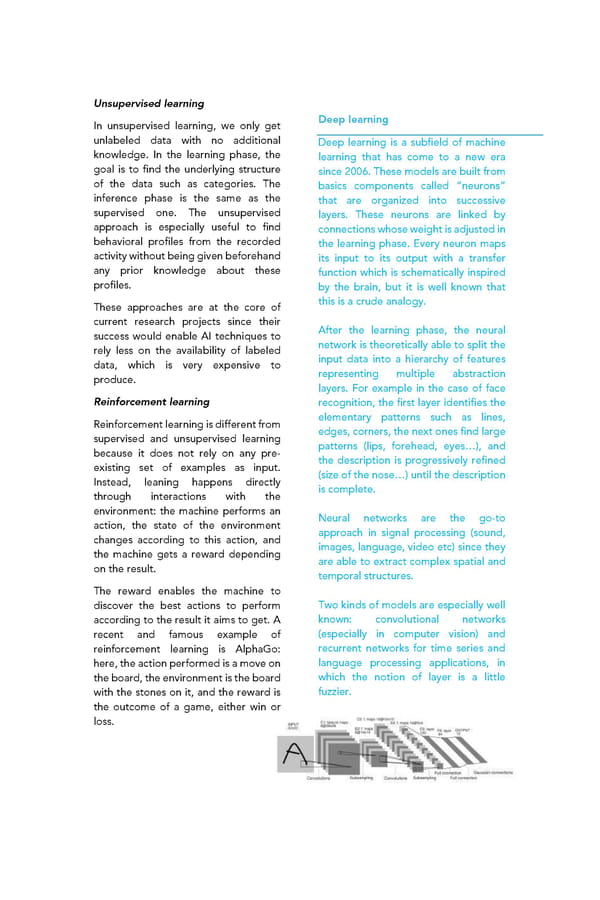Unsupervised learning In unsupervised learning, we only get Deep learning unlabeled data with no additional Deep learning is a subfield of machine knowledge. In the learning phase, the learning that has come to a new era goal is to find the underlying structure since 2006. These models are built from of the data such as categories. The basics components called “neurons” inference phase is the same as the that are organized into successive supervised one. The unsupervised layers. These neurons are linked by approach is especially useful to find connections whose weight is adjusted in behavioral profiles from the recorded the learning phase. Every neuron maps activity without being given beforehand its input to its output with a transfer any prior knowledge about these function which is schematically inspired profiles. by the brain, but it is well known that These approaches are at the core of this is a crude analogy. current research projects since their success would enable AI techniques to After the learning phase, the neural rely less on the availability of labeled network is theoretically able to split the data, which is very expensive to input data into a hierarchy of features produce. representing multiple abstraction layers. For example in the case of face Reinforcement learning recognition, the first layer identifies the Reinforcement learning is different from elementary patterns such as lines, supervised and unsupervised learning edges, corners, the next ones find large because it does not rely on any pre- patterns (lips, forehead, eyes…), and existing set of examples as input. the description is progressively refined Instead, leaning happens directly (size of the nose…) until the description through interactions with the is complete. environment: the machine performs an action, the state of the environment Neural networks are the go-to changes according to this action, and approach in signal processing (sound, the machine gets a reward depending images, language, video etc) since they on the result. are able to extract complex spatial and temporal structures. The reward enables the machine to discover the best actions to perform Two kinds of models are especially well according to the result it aims to get. A known: convolutional networks recent and famous example of (especially in computer vision) and reinforcement learning is AlphaGo: recurrent networks for time series and here, the action performed is a move on language processing applications, in the board, the environment is the board which the notion of layer is a little with the stones on it, and the reward is fuzzier. the outcome of a game, either win or loss.
 What is AI? Page 3 Page 5
What is AI? Page 3 Page 5